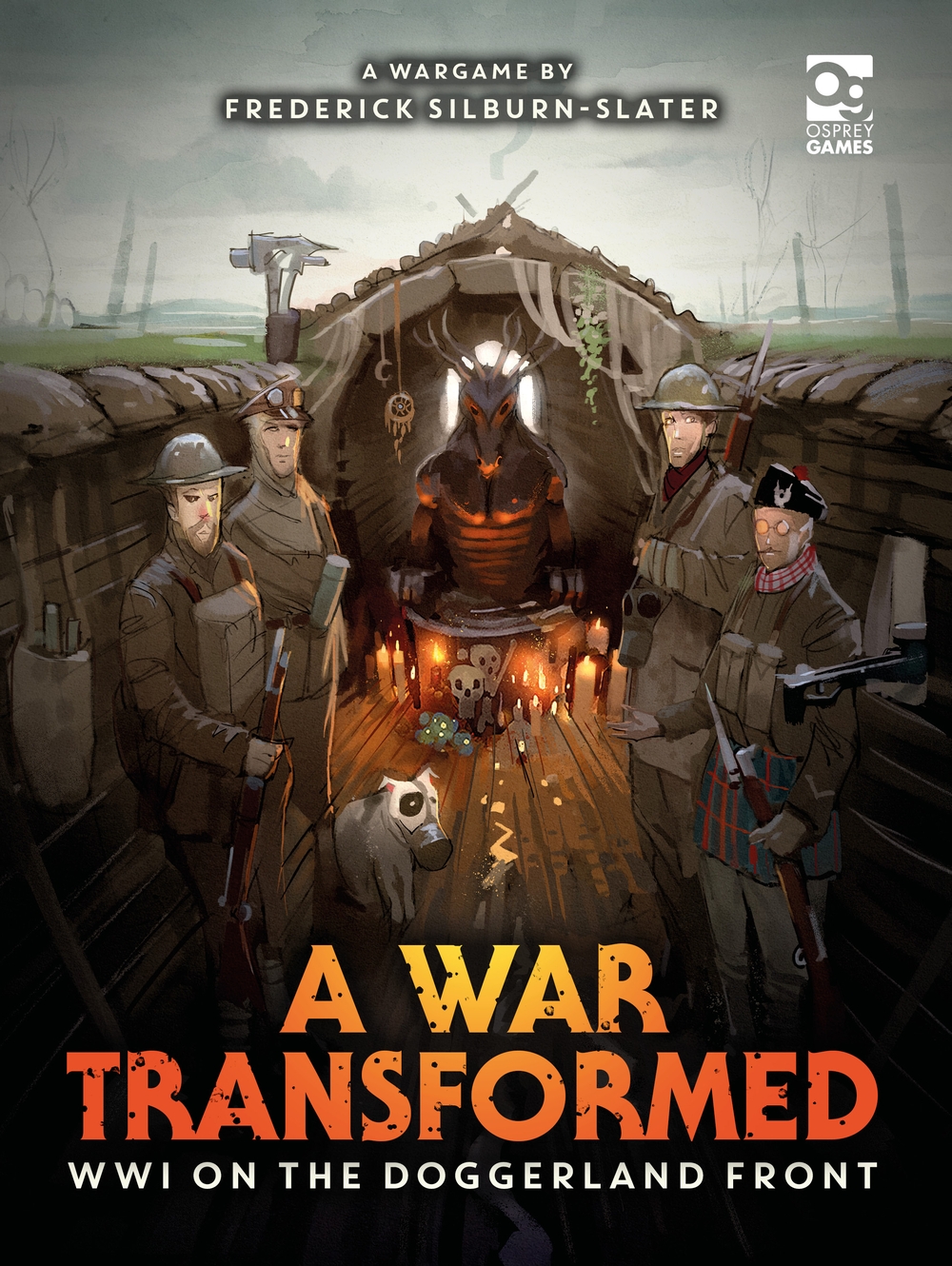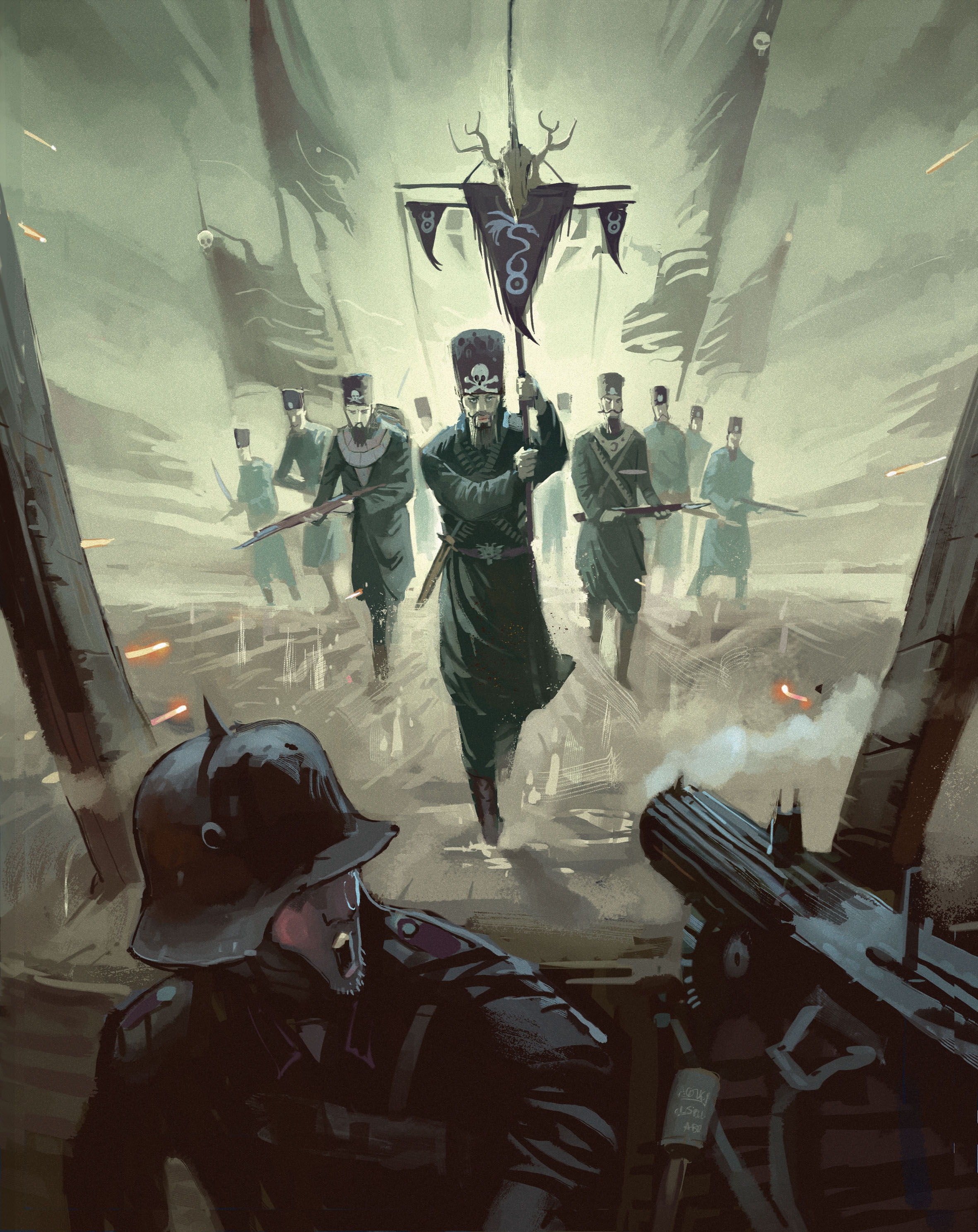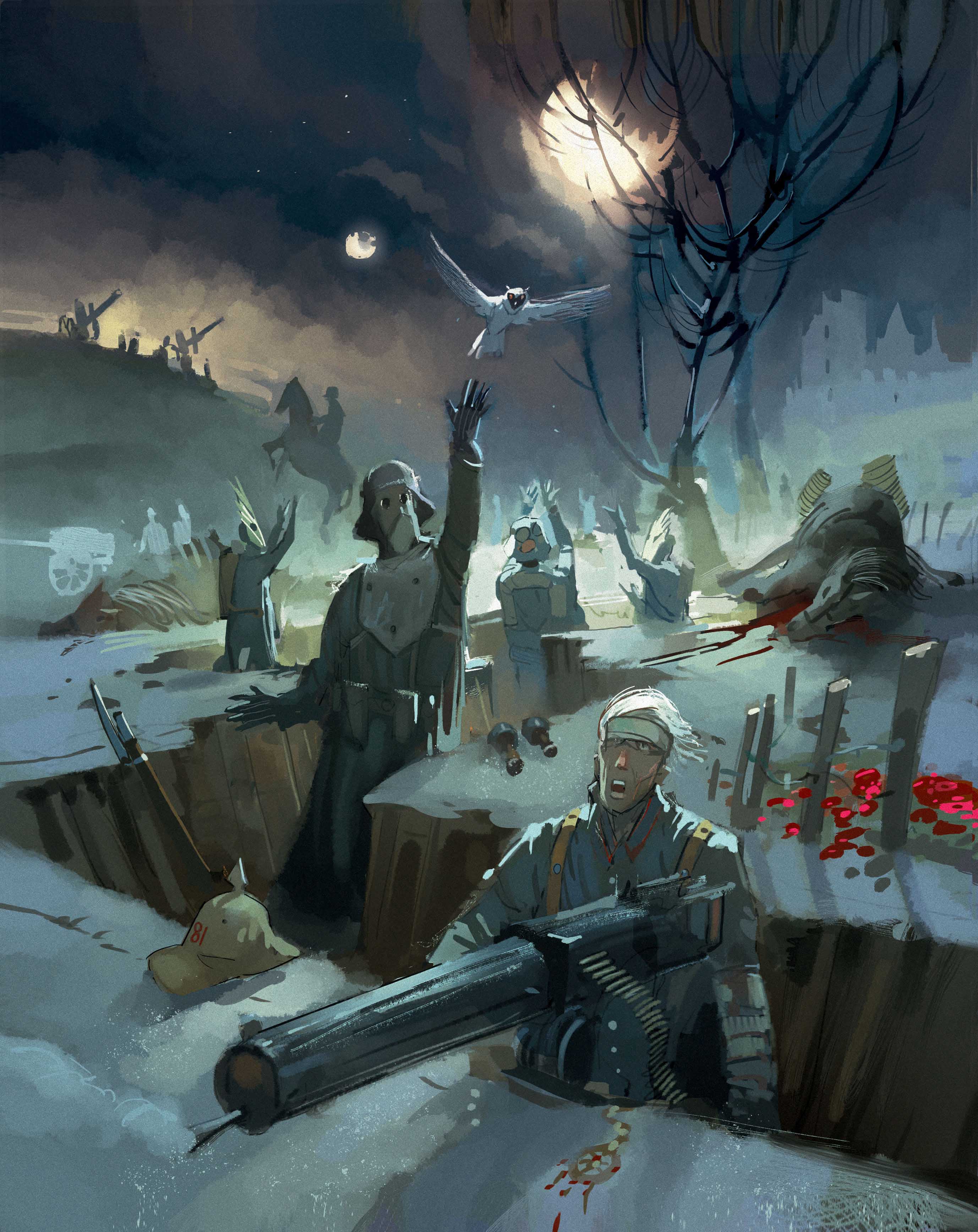
Curious about how a game of A War Transformed, our folk-horror Weird War One wargame, actually plays? Look no further than this design diary from author Frederick Silburn-Slater...
A different kind of weird war
The weird war genre has a long history, stretching back as far as the 1870s. Invasion literature, ranging from the serious to the silly, captivated audiences with its nightmare scenarios of German invasion, some of which contained elements of pure science fiction. Some writers, amongst them HG Wells, went a step further, introducing creatures from far off planets or technological innovations of startling imagination. The anxieties and preoccupations of invasion literature are joined by the tropes of pulp fiction, with its mad scientists and crazed cults, that dominated popular fiction and comics in the decades either side of World War Two. Between these two sources, the tenor of the weird war genre is established.
Often in weird war games and fiction, it is the sudden appearance of a new technology, or extraordinary material of limitless potential, which changes the established course of history. A War Transformed shares the same heritage with other weird war games like Konflikt 47 and Castles in the Sky, but instead of focusing on weird science, it leans heavily into the theme of the occult. Rather than weirdness coming from unobtanium-powered wonder weapons, or Jules Vernesque steampunk gizmos, the weirdness is the product of pagan magic.
The weirdness of A War Transformed also provides a convenient way to skirt around the issues that have historically limited the popularity of skirmish wargames focusing on World War One. With its trenches, barbed wire, and mud, the conditions of the conflict, or at least those which prevail in the popular imagination*, give little room for the kind of manoeuvre that is necessary in a skirmish-level game. Consequently the Great War remains comparatively unexplored, and its lack of popularity translates to a tragic dearth of weirdified games, despite the charismatic nature of weapons, uniforms and technology in the conflict. The catastrophic events that kick start the action of A War Transformed change the dynamic of the war completely, giving it plenty of skirmish potential!
*To pre-empt the absolute tirade of letters and emails that I am bound to receive about this sweeping statement, I know that trench warfare could be more dynamic than is often envisaged, that on the western front the war had several, highly-mobile phases and was often characterised by far greater movement in its other fronts and theatres.
Command abilities, rituals, and manifestation
At the start of each round, both players generate command tokens, the number of which is determined by their force’s composition and its actions and successes in the previous round. These command tokens are used by players to purchase powerful abilities including military orders and magical rituals, wherein the player’s witch intercedes with the gods and spirits to grant their troops bonuses, harm their enemies, or a host of other options. Players can also use a separate resource called manifestation dice to call forth the hideous creatures that haunt the dark corners of folklore and who will act as allies, albeit with a caveat!
Games of A War Transformed are divided into a number of different phases, the first of which is the command phase. It is here that players can issue orders or use rituals and manifestation dice. The command phase is the time where players can set in motion whatever scheme or plot they have for the rest of the round, granting additional fighting prowess to the units which are the cornerstone of their plan, or ensuring that they have some additional protection against their enemies’ attacks. Their opponent would do well to observe their actions carefully, so that they can anticipate their opponent’s moves and try and scupper them with orders or rituals of their own.
The orders available to players range from the prosaic to the exceptional, with many faction-specific commanders having their own special orders which are thematic, unique and change the dynamic of play. Players can also choose orders from a common roster, inspired by the combat conditions of the Western Front, with a special class of orders which can only be used in the first round of the game and which simulate initial bombardments, gas barrages and the use of smoke to cover the advance of troops. Players spend command tokens to see their chosen orders carried out, but the more command tokens are spent on orders, the fewer are available for other abilities and actions!
In addition to using their command tokens for orders, they can be converted into ritual dice. Rituals are magical intercessions by the ancient gods of the world – in A War Transformed, these are based on the Major Arcana of the tarot deck, numbering 22 in total. As a method of divination rather than just a variant style of playing cards, the tarot have a shorter history than many realise, beginning in the late 18th century and only popularised in the tail end of the 19th by some of the seminal figures of the new occult movement like Eliphas Levi. By the period in which A War Transformed is set, the tarot had achieved extraordinary status as a mystical practice, as well as a long and entirely invented pedigree stretching back to Ancient Egypt. The first widely available tarot cards, the Rider-Waite tarot, were produced in 1909 by members of the Hermetic Order of the Golden Dawn, a move which forever codified the visual identity of the tarot and set it firmly in the Edwardian age. Players in A War Transformed choose a hermetic lodge, governed by one of the four main deities of its universe: the Maiden, the Mother, the Crone and the Horned God.
Manifestation dice, generated by winning close combats and destroying your foes, allow players to summon monstrous creatures across the veil between realities. These creatures have powerful abilities or are exceptional units for a particular task and can be used by players to accomplish their objectives on the battlefield. By manifesting a creature behind the enemy lines, players can disrupt their foe’s defensive lines, or turn a sweeping assault into a terrified defence!
Activation and initiative
A War Transformed features an activation system wherein units act in sequence depending on their keyword. Players take it in turns to activate all of their units with a particular keyword. Units with that keyword then undertake any actions desired by their commanding player, like moving or shooting, simultaneously. Once a player has exhausted all of the actions for their units with that keyword, they yield that activation phase to their opponent, who activates all of their units with the same keywords. These activation phases are broken down by unit type, with units like machine gunners, artillery and trench mortars acting first (Cannonade), followed by chosen troops (Elites) and then everyone else (Line).
Which player has the activation phase first is determined by a simple roll-off, however players can boost their chances of winning that roll off by converting some of their command tokens into additional dice. As these extra dice are sourced from the player’s command pool, players must strike a balance between activating first and using their command tokens for special orders and abilities, including the use of powerful magic.
Command units can break the order of activation by performing actions in any phase, though not without cost. Certain command abilities, including magical ones, allow players to break the traditional order of activation and issue orders to units outside of their own phase. This gives players the opportunity to disrupt the natural order bolstering a beleaguered defence with extra manpower, or committing additional forces to strengthen a challenging assault.
Activating first gives players the advantage, and so you’ll often want to bid additional dice to win important phases. Shooting at opponents before they can activate gives your units the chance to pin them, pummelling them with such a withering barrage of fire that they have no choice but to keep their heads down! Pinned enemies cannot be activated normally, so clever players can deny their enemy the chance to use their forces effectively. Only certain weapons, like machine gunners, mortars, and snipers, are capable of causing pinning, with some being considerably more effective than others. Well-placed machine guns can, by acting first, stop an advance in its tracks, but the opposing player could secure the first activation in the Cannonade phase and knock them out with their own artillery before they have a chance to fire!
Combat Stress
War is hell. Perhaps nowhere has that fact been more apparent than on the Western Front. The rigours of combat cause an incredible strain, which tells on even the best-trained of fighting forces. The combat of World War One was grisly enough before the coming of magic and the reappearance of nightmarish creatures from folklore, so managing the stress of your troops will be of paramount importance to a player. At the same time, using weapons and tactics designed to break the will of your opponent’s troops is one of the surest paths to victory.
Over the course of a game of A War Transformed, units will gain combat stress as they are shot at, take casualties and fight in close combat. Combat stress can be thought of as mental strain, physical exhaustion, minor injuries and mechanical failures. It affects almost every class of unit, with the exception of those which are incapable of such contemptibly human emotions as terror!
Combat stress makes your core units less effective, lowering their leadership characteristics and reducing the damage they can dish out in close combat. For other units, including vehicles and weapons teams, combat stress can be even more devastating, impacting on their basic abilities or giving them special rules which are generally negative in character, though occasionally stacking combat stress can lead to some unexpected results…
Build too much combat stress on a unit and it will be liable for a battleshock test. These special leadership tests can be particularly punishing for small elite units, or even command models and weapons teams, whose crews simply melt away under the weight of fire. There are a number of ways to mitigate combat stress and players can even use rituals to remove markers from their units if they have the command tokens. When players don’t have access to rituals or similar means of removing combat stress markers, they can always order their units to rest, removing combat stress at the expense of an activation.
Mechanical depth, thematic richness
The gameplay of A War Transformed is designed to complement its setting. The rules and mechanics of the game serve as a tool for players to explore their own narrative, so they are primarily designed to be fun, as opposed to highly competitive. Players can set the pace of their games, and the rules allow enough flexibility and freedom to build lists that are fun and fluffy but which still have the chance of achieving victory.
A War Transformed is out 28th September in the UK and 31st October in the US.
The next Dispatches from Doggerland short story will be out next Tuesday,
and the final design diary will dig into the game's world-building a week today.




Comments
You must be logged in to comment on this post. Click here to log in.
Submit your comment